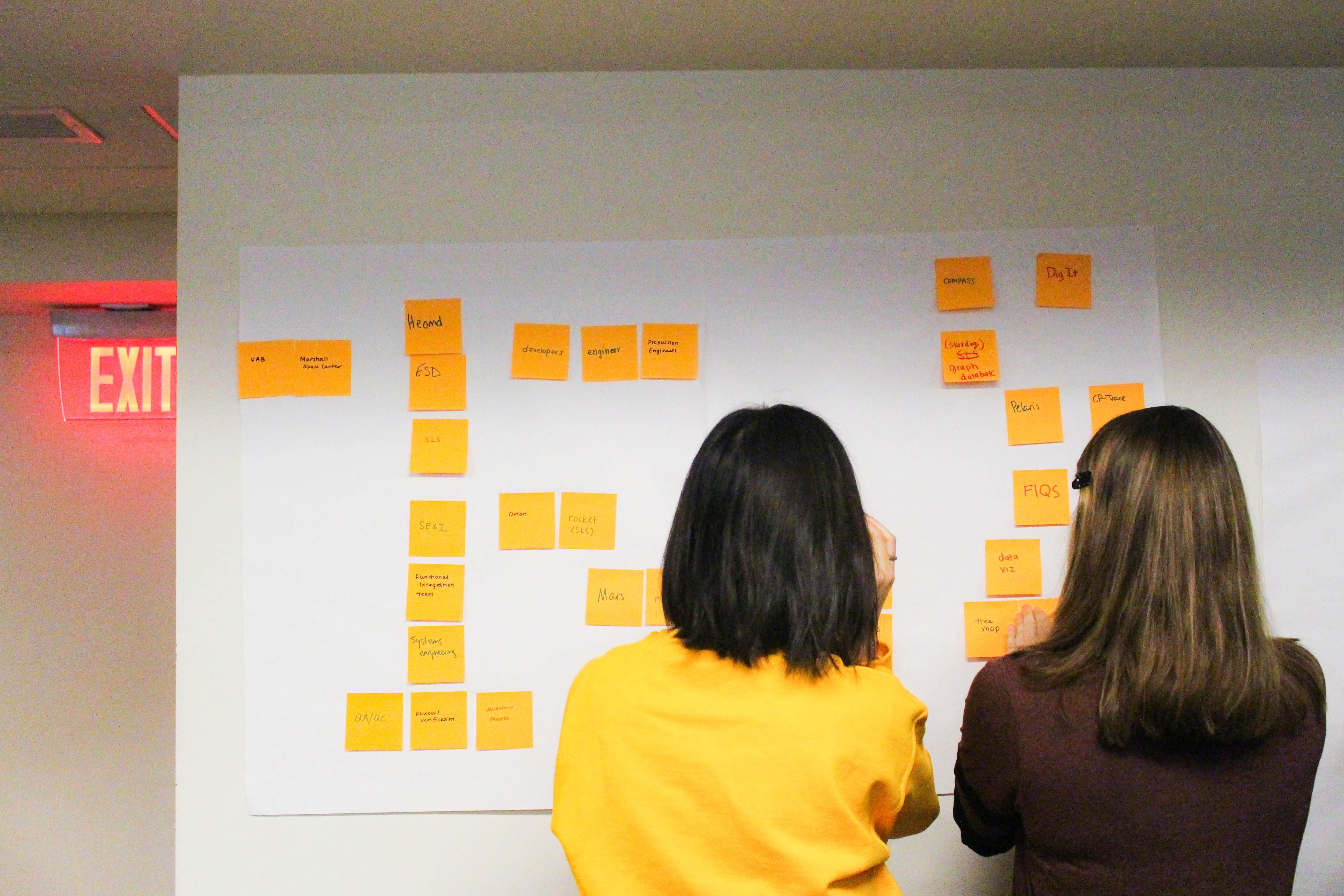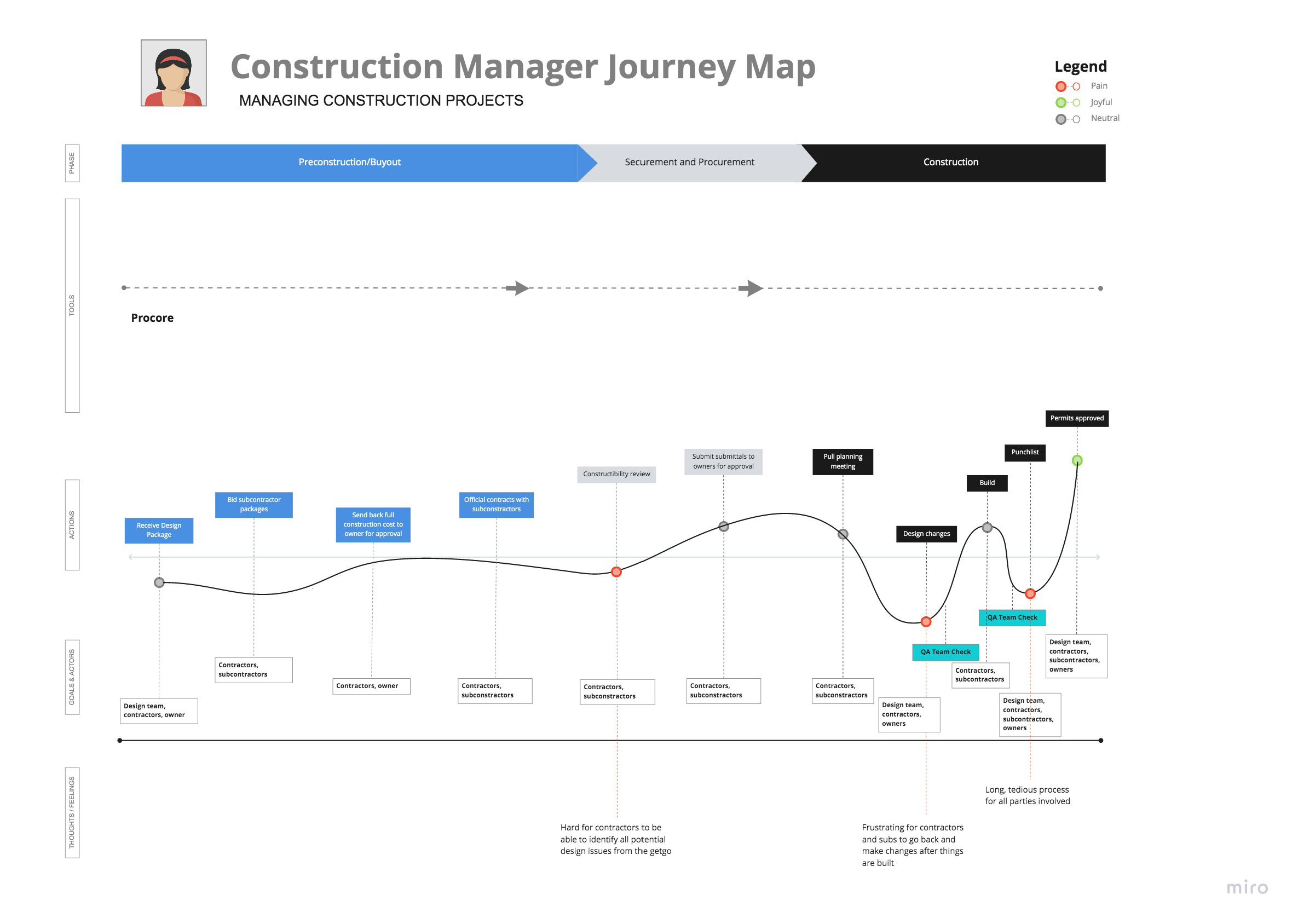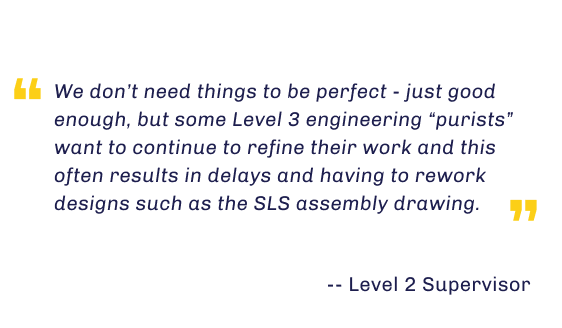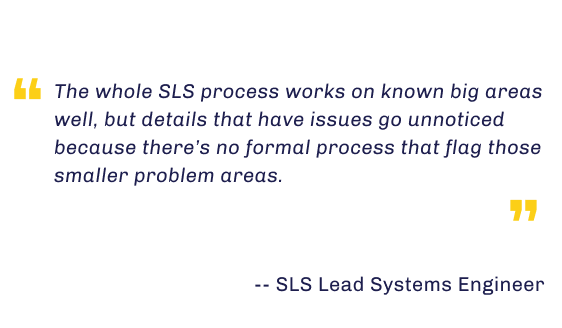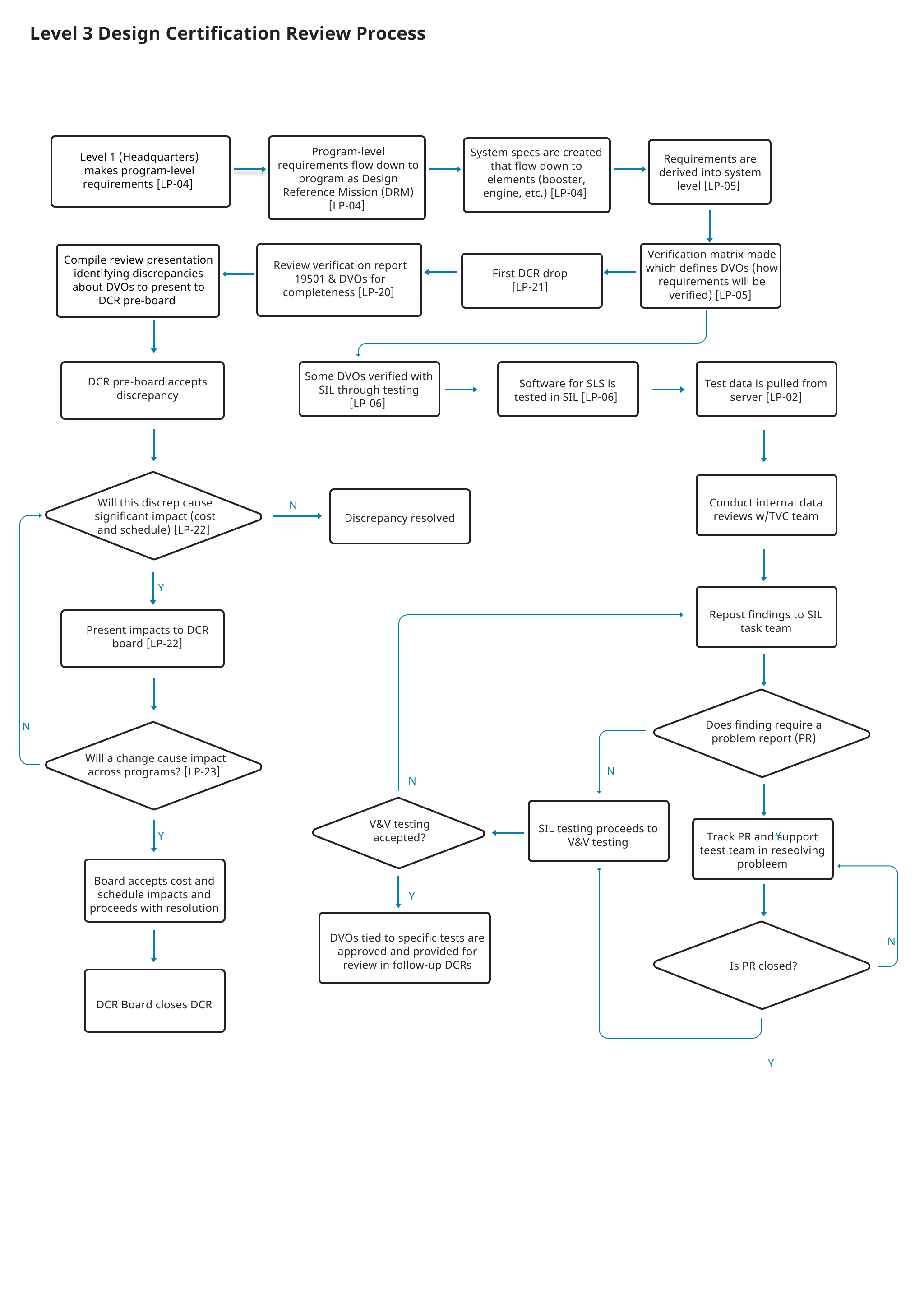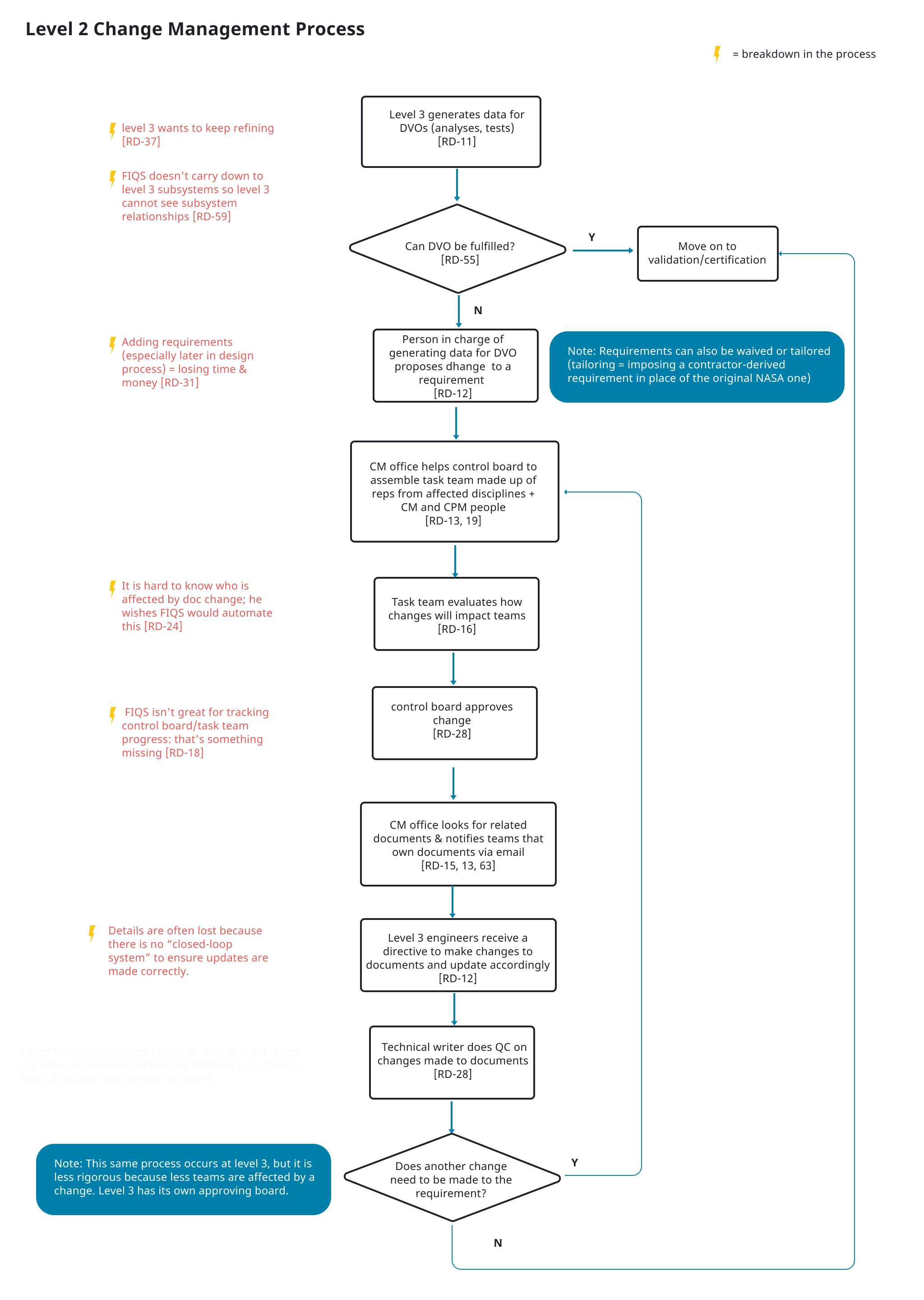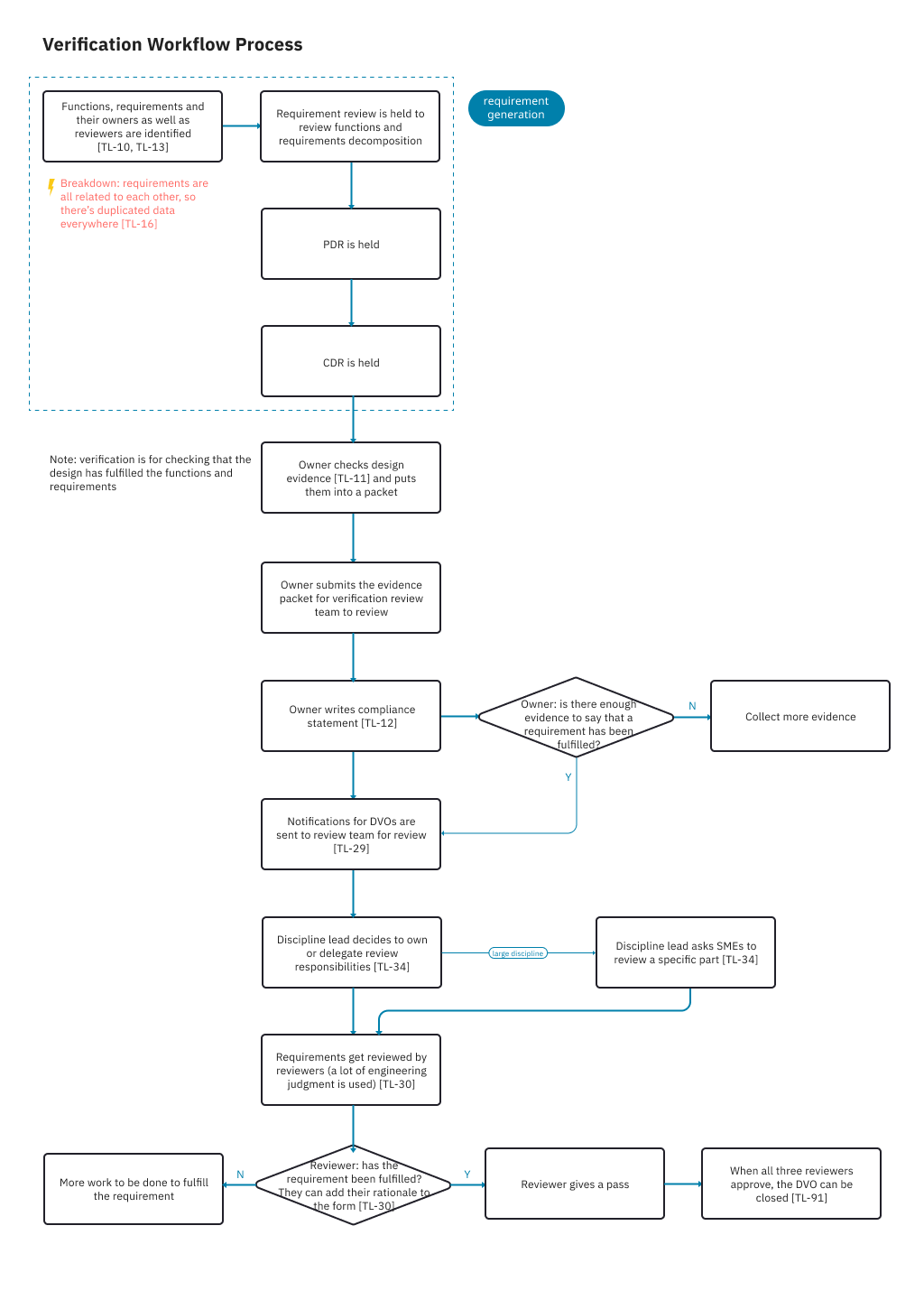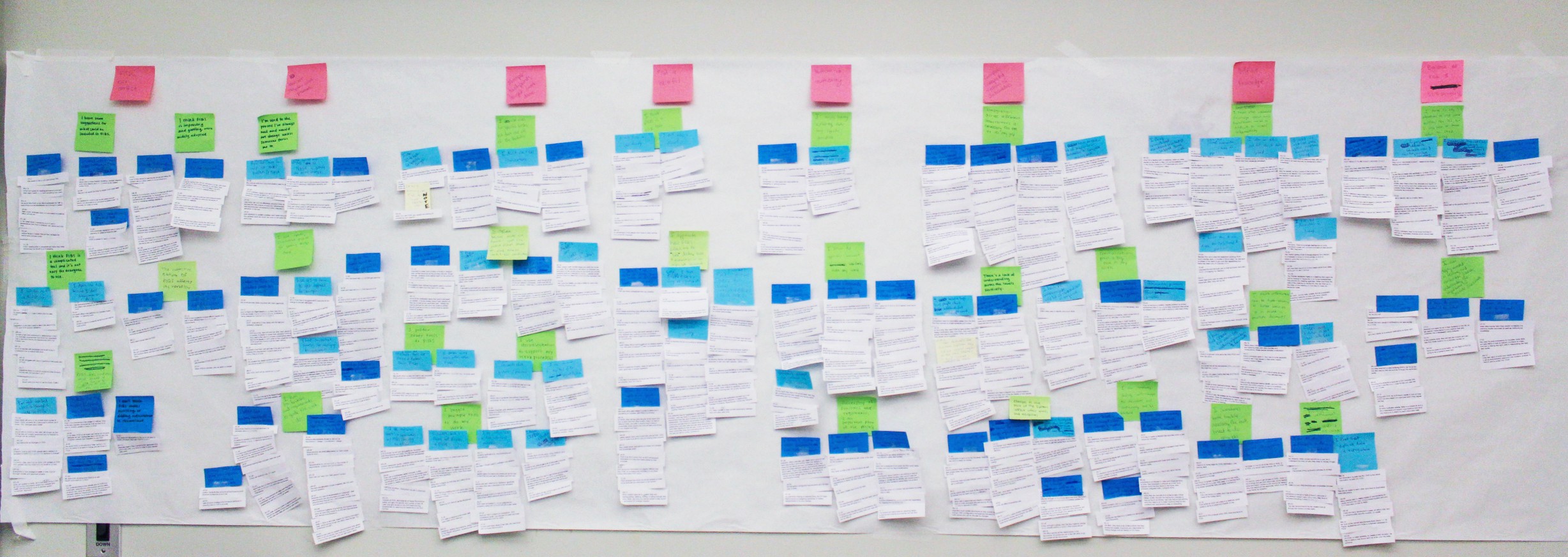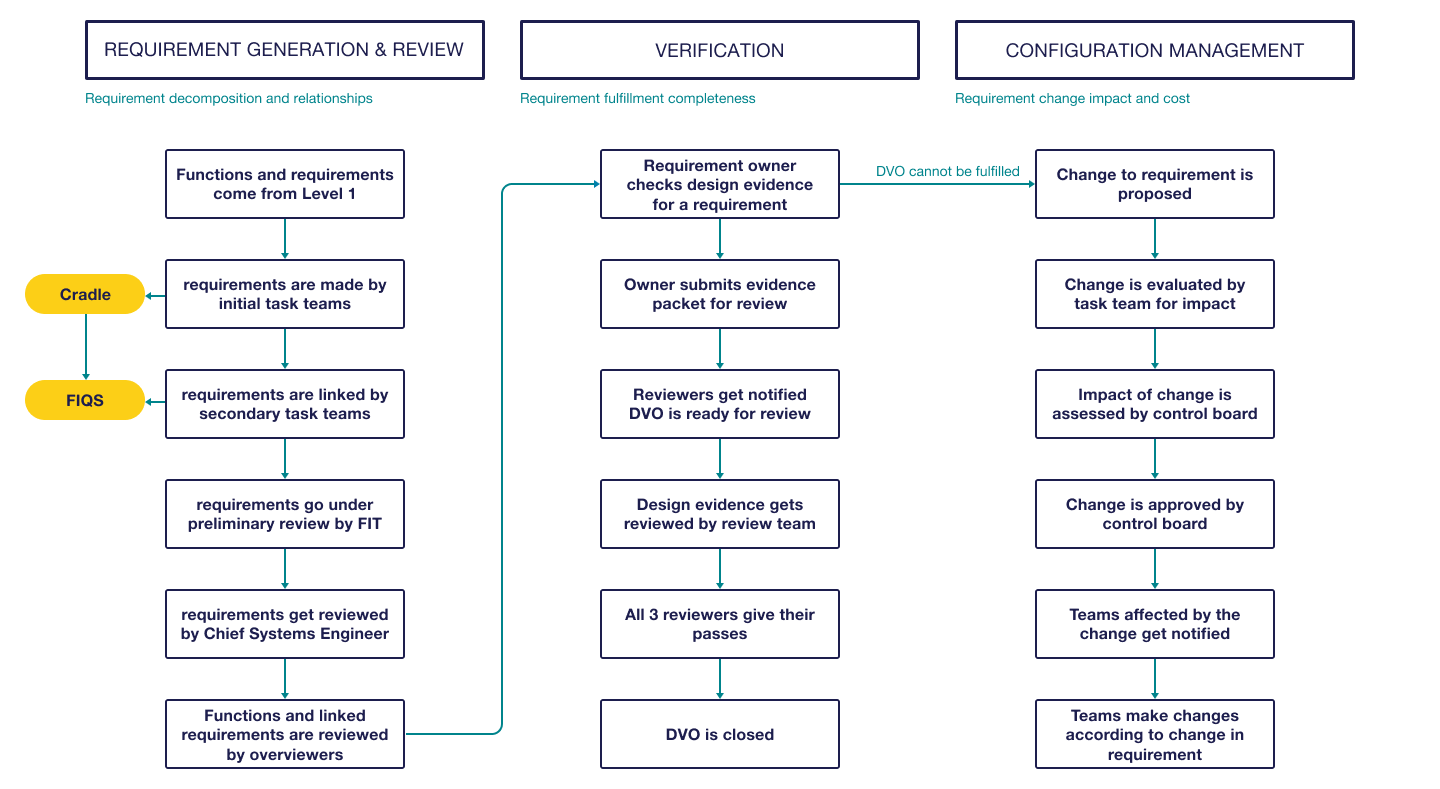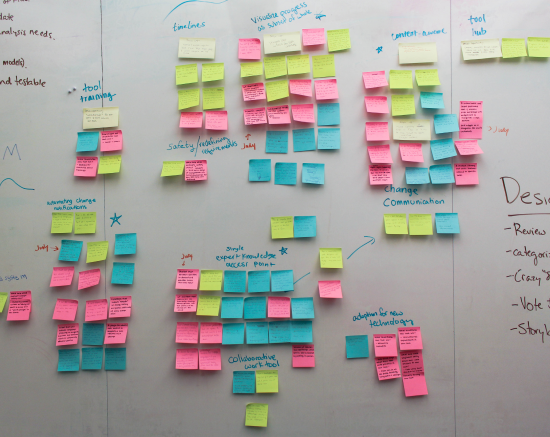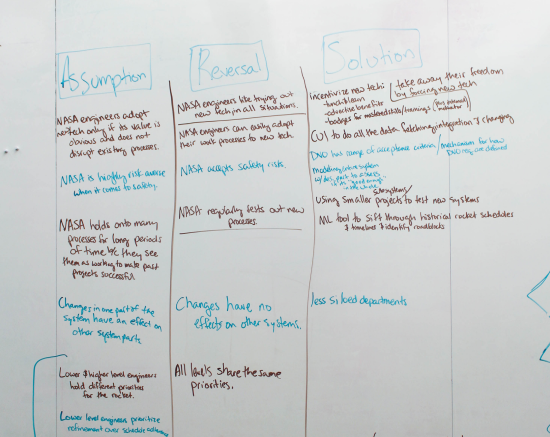Getting to know our problem space
Starting off, our team knew close to nothing about either space or systems engineering, we started with a list of questions to answer through background research, including the mission of Space Launch System (SLS), functional analysis and graph databases.in functional analysis.
Visualizing our initial understanding of systems engineering in the context of SLS
Analogous Domain
After developing a general understanding of the problem space, we were able to identify domains that share a similar context and work flow with NASA systems engineers. We focused on fields where multiple teams collaborate to work against a wide variety of requirements in complex systems over time. We conducted 8 interviews with people whose roles ranged from NASA systems engineer to manufacturing engineers:
Architecture, Civil Engineering, Construction
Architects, civil engineers and construction workers come in at different phases of bringing a building to life. These projects timelines often span many years and involves many stakeholders.
Manufacturing Field and Industry
Manufacturing relies on an understanding of how different parts fit together and requires heavy cross-team collaboration to deliver a well-integrated product.
Systems Engineering at different NASA program
Systems engineers working on other NASA projects shares the general NASA context, and are also responsible for integrating different subsystems.
To better understand our findings, we created journey maps to represent the processes, with a focus on their relationship to dependencies, collaboration, schedules as well as their pain points.

Teams face roadblocks when they rely too heavily on institutional knowledge.

In face of uncertainty, people use judgement and make assumptions.

The more stakeholders there are, the more important communication becomes for project success.

Too many dependencies can create delays in completing projects.
With the domain context and insights we gathered from analogous domain research, we were able to start preparing for our contextual interviews onsite.
We visited the Marshall Space Flight Center in Huntsville, Alabama and conducted semi-structured interviews and contextual inquiries with the SLS engineers. We talked to both systems engineers (who focus on the integration and the interrelationship of different parts/disciplines) and engineers who are responsible for designing specific parts. These interviews revealed contrasting perspectives.
We sythesized our research by building sequence models (which helped us understand engineers' work processes and identify our knowledge gap) and an affinity diagram (which allowed us to uncover themes by grouping the data).
Sequence Models
Affinity Diagram
Here is the affinity diagram we created from our 10 interviews/contextual inquiries.

